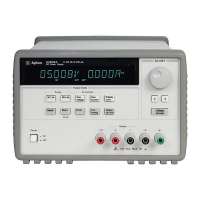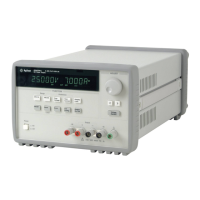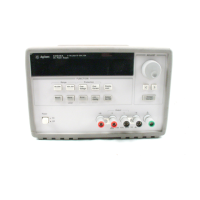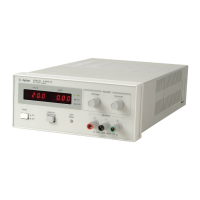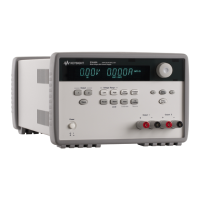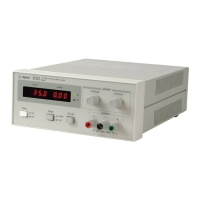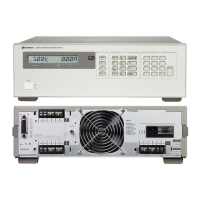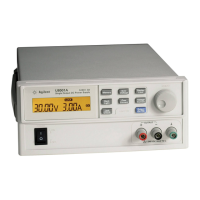Chapter 4 Remote Interface Reference
Calibration Commands
88
CALibration:SECure:STATe {OFF | ON>}, <code>
This command unsecures or secures the power supply for calibration. The calibration
code may contain up to 12 characters over the remote interface.
CALibration:SECure:STATe?
This command queries the secured state for calibration of the power supply. The
returned parameter is “0” (OFF) or “1” (ON).
CALibration:STRing <quoted string>
This command records calibration information about your power supply.
For example, you can store such information as the last calibration date, the next
calibration due date, or the power supply’s serial number. The calibration message
may contain up to 40 characters. The power supply should be unsecured before
sending a calibration message.
CALibration:STRing?
This command queries the calibration message and returns a quoted string.
CALibration:VOLTage[:DATA] <numeric value>
This command can only be used after calibration is unsecured. It enters a voltage value
of a selected output that you obtained by reading an external meter. You must first
select a calibration level (CAL:VOLT:LEV) for the value being entered. Two
successive values (one for each end of the calibration range) must be selected and
entered. The power supply then computes new voltage calibration constants. These
constants are then stored in non-volatile memory.
CALibration:VOLTage:LEVel {MINimum | MAXimum}
Before using this command, you must select the output which is to be calibrated by
using INSTrument command. This command can only be used after calibration is
unsecured. It sets the power supply to a calibration point that is entered with
CALibration:VOLTage[:DATA] command. During calibration, two points
must be entered and the low-end point (MIN) must be selected.
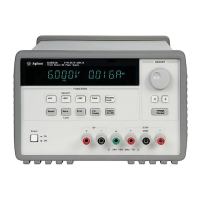
